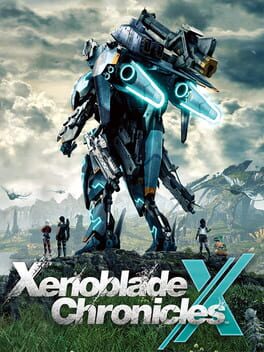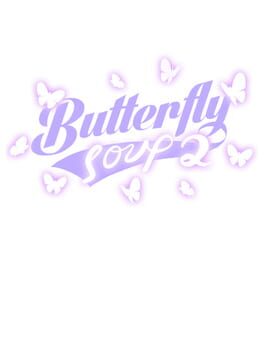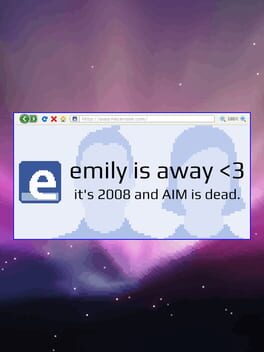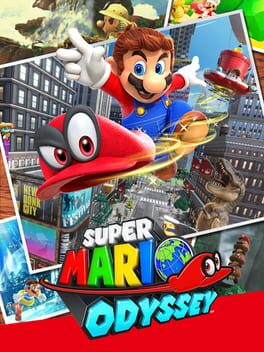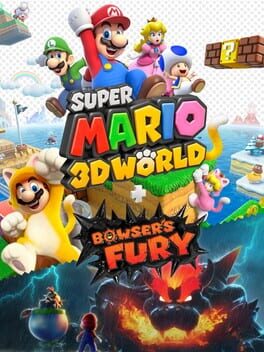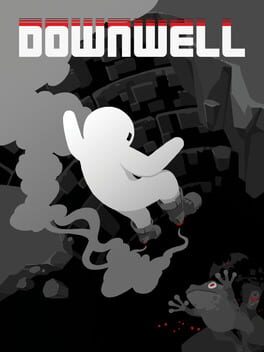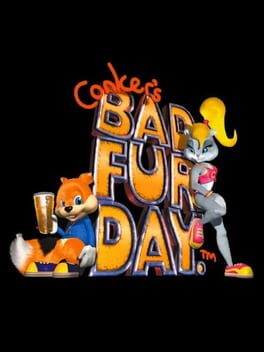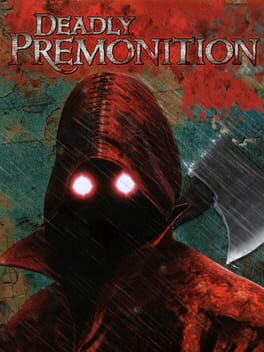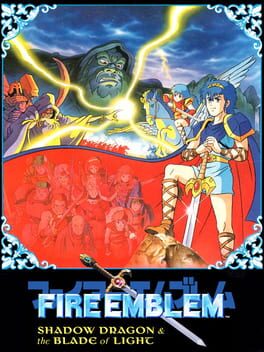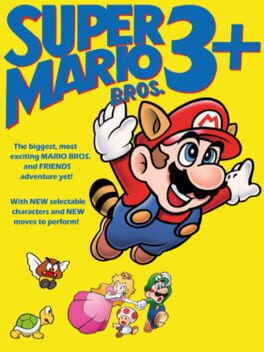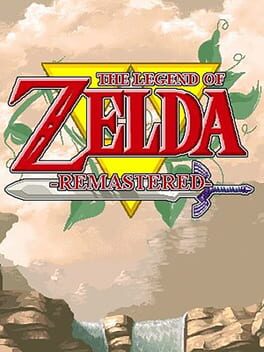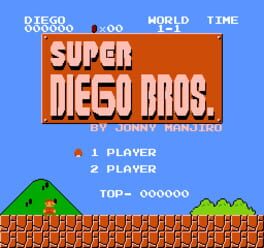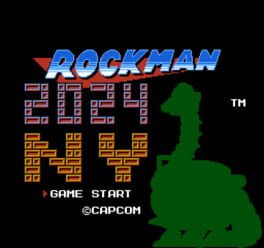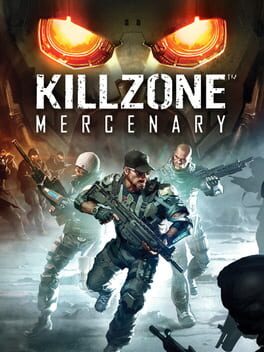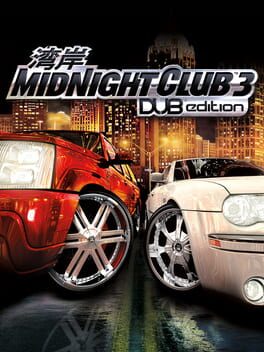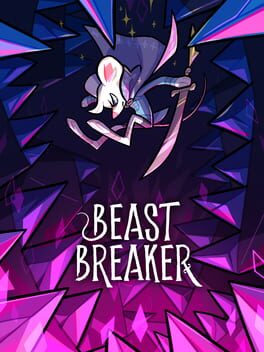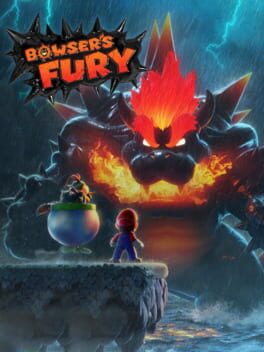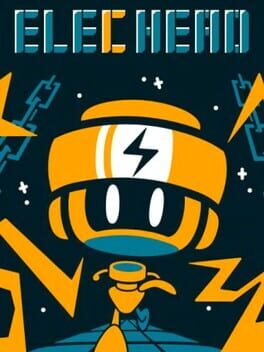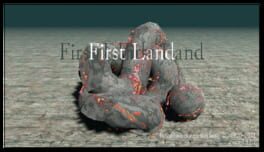Dimn
20 reviews liked by Dimn
A pretty flawed game in terms of how it handles quests and story but an incredibly ambitious one. I can't think of anything else that would make you wait 30+ hours to unlock one of the main selling features, but there's something about working your way up as a blade on that harsh planet that makes the moment you finally get a skell license and eventually take flight so special and satisfying... It completely changes the world you've come to know so far. Soaring around an exceptionally designed open world fighting monsters in the sky with Hiroyuki Sawano music blasting is something you won't find anywhere else.
So many things about XCX make it feel like a true evolution of XC1, in gameplay and art design, complex mechanics, intricate area layouts, so much customization and freedom, that were all just thrown out of the window for the next entries. The whole thing feels genuinely impossible to pull off on this toaster of a console, its scale and visual fidelity impressed me more than anything on Switch ever has. In the best way it doesn't feel like a Nintendo game at all.
I really enjoyed spending most of last month chilling exploring this alien planet. It's just been sitting on my shelf for years unplayed after I failed to get into it before, and it ended up being my most enjoyable Xenoblade experience since the original. 1 and X truly feel like they're in a different series from 2 and 3 to me. Had I played this back in 2015 I don't think I would have been nearly as impressed by BOTW, or any open world for that matter. I would recommend checking it out now because any future port is going to be missing some stuff, it's very tailored for the Wii U unfortunately.
So many things about XCX make it feel like a true evolution of XC1, in gameplay and art design, complex mechanics, intricate area layouts, so much customization and freedom, that were all just thrown out of the window for the next entries. The whole thing feels genuinely impossible to pull off on this toaster of a console, its scale and visual fidelity impressed me more than anything on Switch ever has. In the best way it doesn't feel like a Nintendo game at all.
I really enjoyed spending most of last month chilling exploring this alien planet. It's just been sitting on my shelf for years unplayed after I failed to get into it before, and it ended up being my most enjoyable Xenoblade experience since the original. 1 and X truly feel like they're in a different series from 2 and 3 to me. Had I played this back in 2015 I don't think I would have been nearly as impressed by BOTW, or any open world for that matter. I would recommend checking it out now because any future port is going to be missing some stuff, it's very tailored for the Wii U unfortunately.
Butterfly Soup 2
2022
Fuck it, I don't care, I don't have reasons, nor do I want them. I am capable of emotion, believe it or not, despite my scrawls of pontification. And I get feelings from these games. The first came out in 2017 (age of political awakening and steady decline) and this came out in 2022 (deep in the age of "it") and I needed it both times. Romance is dangerous for me; I avoid it because I get all up in my lonely feelings. This is my rare chance to curl up in it. There's no logical reason why this works for me so much and other things like it simply don't. I can dissect it or make a nuanced pitch, but it's a waste of words. This is not a recommendation or a review. I'm just saying things. I'm not going to compare one entry to the other; I don't much remember the first one other than adoring it deeply. Sure, maybe some of it is hamfisted this time around, and sure, there are anachronistic memes, but I literally don't care. I just like it. It makes me smile and I get warm fuzzies and I like it. It is so rare that I can just smile authentically and earnestly at art. Vulnerability can be embarrassing but it's liberating. Earnestness will set me free. And if you think it's cringe to find joy in something so vulnerable, then you can leave me the fuck alone
Emily is Away <3
2021
Long and personal review ahead, be aware. (Not really that long nor personal, putting this up here mostly as a cringe disclaimer)
Ok, so I started playing on December of the last year, I got to finish the first two chapters and never touched it ever again until yesterday, when I decided that I wanted to finish some leftover games I had started but dropped for whatever reason, mainly because my computer got bricked on January and I lost so many saves files that I had to drop half of my Steam games from the 2000s. But I didn’t lose the save file for Emily <3, I just didn’t want to finish it. I played Emily Too at the start of the same year, and while I kinda liked it, it didn’t click with me like the first Emily game did. The reason being that playing Emily Too was like revisiting the same story all over again. Tho in reality, it isn’t the same story.
The first Emily, for me, was a game about realizing that not everything needs to go as you pleased and moving on, because it didn’t matter how many times you replayed it, the ending will always stay the same (or worse if you wanted to), so the best thing to do is to stop lamenting yourself and move on. Now, what was Emily Too about? Emily Too was about getting the girl, achieving the good ending, and there wasn’t only one girl but two, so you got to choose which one did you prefer. I know this is an oversimplification of what it actually does, but the outcome was (if you weren’t acting like a jerk) starting a relationship with the girl you wanted. So, what is Emily <3 about then? Emily <3 is a relationship simulator. None of these games follow an overarching story, they’re self-contained stories, but they repeat characters (the titular Emily and Evelyn, the second girl introduced in Too) and the gameplay and narrative are pretty similar.
Now, when I say Emily <3 is a relationship simulator I mean it literally (again, if you aren’t acting like a jerk). You get to choose the girl that you want again, but now the game doesn’t end there, you get to see what happens after, because getting the girl is only the first two chapters, the next three chapters are about facing relationship issues. This game differs with the previous two on the character cast, now there isn’t just Emily and Evelyn, like in the last entry, you get to talk with a friend, Mat, his girlfriend, Kelly, and many, many more, you keep getting introduced to new characters as the story goes on. In fact, the branchings of the story are way more than in Two because of this. There are many more actions you can do and things you can say. And while this may look more profound, it is here that the message gets lost. See, the first Emily had a clear meaning, not everything was under your control and Emily had her own stances and opinions, like a real human being. That meaning got lost in Two, where the things you said had an impact on the characters so they’d act according to what you, as the player, want, instead of what they (Emily and Evelyn), as characters, wanted. I know this was done in favor of making your decisions actually matter, but I just don’t get what it was going for. I mean, yeah, I got the happy ending everyone who played the first Emily wanted, but was it worth it if everything really deep that the game had to say got lost in the way? What you think of this is up to you, but for me is a clear no.
When I got to finish Emily <3 and saw all the branches and paths I could have taken, how much decisions I could have made, I just… didn’t feel anything. Yeah, I get to have the ending I want, but what is this all about? What do these multiple endings mean? That my actions have consequences? I already know that, even if I hadn’t played Emily Too beforehand, I could have played other games with similar meanings, but even if I hadn’t, I would already know this because of real life itself, because that’s what real life is about. So Emily <3 is just a repetition. A repetition of the same game Kyle Seeley had made four years before. A repetition twice the length, with more characters, more paths and more… nothing. All the characters just are there to give the illusion of more, they work as a reflection on the player’s ideas about relationships. But hey, at least it’s better than getting the girl you want like if it is some binary option instead of another human being.
What I’m trying to get to after this long talk (and by the way, thanks for sticking this long), is that the first Emily is Away was an important game to me because what I extracted from it was the message of letting things go. Apparently I’m the only one who thinks this way, because it’s not just that people wanted a sequel where they get the good ending they wanted, but more significant is the fact that its creator, Kyle Seeley, hasn’t published anything different besides Emily games. And I hope he’s out there, living his life at the fullest, but what this feels like is the exact opposite thing I always thought that Emily is Away was trying to say.
Since concluding the summer of last year, I’ve been playing other games, I stopped playing non-stop COD games, I broke free from Payday 2 and finally moved on to new games that really interested me. I got into Resident Evil and the Survival Horror genre, I started to dip my toes into other genres, I got to play games that meant something and spoke to me, like Silent Hill 3 or OneShot among other titles, games that will stick with me like the first Emily is Away did. I moved on. Emily did not. I wouldn’t be surprised if in the forthcoming years a hypothetical Emily is 4way or something like that gets released. But I’m done with Emily, I’ve moved on and I think that’s for the best. Because the summer is half-way through and I just can’t keep thinking about what life will be after it ends, my life is now and I can’t just keep coming back to experience the same downer story every time. If anything, Emily <3 reminds me that the best summers of my life are gone forever, for better or for worse, and there’s nothing I can do, because as with Emily, there are things that will never come back and all I can really do is move on from that and look at the future with optimism and not relive the same bygone summers. Emily is away, and I hope it stays that way. I’m done.
Ok, so I started playing on December of the last year, I got to finish the first two chapters and never touched it ever again until yesterday, when I decided that I wanted to finish some leftover games I had started but dropped for whatever reason, mainly because my computer got bricked on January and I lost so many saves files that I had to drop half of my Steam games from the 2000s. But I didn’t lose the save file for Emily <3, I just didn’t want to finish it. I played Emily Too at the start of the same year, and while I kinda liked it, it didn’t click with me like the first Emily game did. The reason being that playing Emily Too was like revisiting the same story all over again. Tho in reality, it isn’t the same story.
The first Emily, for me, was a game about realizing that not everything needs to go as you pleased and moving on, because it didn’t matter how many times you replayed it, the ending will always stay the same (or worse if you wanted to), so the best thing to do is to stop lamenting yourself and move on. Now, what was Emily Too about? Emily Too was about getting the girl, achieving the good ending, and there wasn’t only one girl but two, so you got to choose which one did you prefer. I know this is an oversimplification of what it actually does, but the outcome was (if you weren’t acting like a jerk) starting a relationship with the girl you wanted. So, what is Emily <3 about then? Emily <3 is a relationship simulator. None of these games follow an overarching story, they’re self-contained stories, but they repeat characters (the titular Emily and Evelyn, the second girl introduced in Too) and the gameplay and narrative are pretty similar.
Now, when I say Emily <3 is a relationship simulator I mean it literally (again, if you aren’t acting like a jerk). You get to choose the girl that you want again, but now the game doesn’t end there, you get to see what happens after, because getting the girl is only the first two chapters, the next three chapters are about facing relationship issues. This game differs with the previous two on the character cast, now there isn’t just Emily and Evelyn, like in the last entry, you get to talk with a friend, Mat, his girlfriend, Kelly, and many, many more, you keep getting introduced to new characters as the story goes on. In fact, the branchings of the story are way more than in Two because of this. There are many more actions you can do and things you can say. And while this may look more profound, it is here that the message gets lost. See, the first Emily had a clear meaning, not everything was under your control and Emily had her own stances and opinions, like a real human being. That meaning got lost in Two, where the things you said had an impact on the characters so they’d act according to what you, as the player, want, instead of what they (Emily and Evelyn), as characters, wanted. I know this was done in favor of making your decisions actually matter, but I just don’t get what it was going for. I mean, yeah, I got the happy ending everyone who played the first Emily wanted, but was it worth it if everything really deep that the game had to say got lost in the way? What you think of this is up to you, but for me is a clear no.
When I got to finish Emily <3 and saw all the branches and paths I could have taken, how much decisions I could have made, I just… didn’t feel anything. Yeah, I get to have the ending I want, but what is this all about? What do these multiple endings mean? That my actions have consequences? I already know that, even if I hadn’t played Emily Too beforehand, I could have played other games with similar meanings, but even if I hadn’t, I would already know this because of real life itself, because that’s what real life is about. So Emily <3 is just a repetition. A repetition of the same game Kyle Seeley had made four years before. A repetition twice the length, with more characters, more paths and more… nothing. All the characters just are there to give the illusion of more, they work as a reflection on the player’s ideas about relationships. But hey, at least it’s better than getting the girl you want like if it is some binary option instead of another human being.
What I’m trying to get to after this long talk (and by the way, thanks for sticking this long), is that the first Emily is Away was an important game to me because what I extracted from it was the message of letting things go. Apparently I’m the only one who thinks this way, because it’s not just that people wanted a sequel where they get the good ending they wanted, but more significant is the fact that its creator, Kyle Seeley, hasn’t published anything different besides Emily games. And I hope he’s out there, living his life at the fullest, but what this feels like is the exact opposite thing I always thought that Emily is Away was trying to say.
Since concluding the summer of last year, I’ve been playing other games, I stopped playing non-stop COD games, I broke free from Payday 2 and finally moved on to new games that really interested me. I got into Resident Evil and the Survival Horror genre, I started to dip my toes into other genres, I got to play games that meant something and spoke to me, like Silent Hill 3 or OneShot among other titles, games that will stick with me like the first Emily is Away did. I moved on. Emily did not. I wouldn’t be surprised if in the forthcoming years a hypothetical Emily is 4way or something like that gets released. But I’m done with Emily, I’ve moved on and I think that’s for the best. Because the summer is half-way through and I just can’t keep thinking about what life will be after it ends, my life is now and I can’t just keep coming back to experience the same downer story every time. If anything, Emily <3 reminds me that the best summers of my life are gone forever, for better or for worse, and there’s nothing I can do, because as with Emily, there are things that will never come back and all I can really do is move on from that and look at the future with optimism and not relive the same bygone summers. Emily is away, and I hope it stays that way. I’m done.
Super Mario Odyssey
2017
Primera vez en la historia de Super Mario que una de sus entregas principales sabe a decadencia. Nunca antes, ni siquiera en los juegos más derivativos de la serie principal (World, Galaxy 2, 3D World), había olido a falta de ideas nuevas. Hasta ahora.
Super Mario Odyssey es un Greatest Hits encubierto. El viaje que hacemos por los distintos mundos del juego bien puede interpretarse como una visita guiada a través de los distintos títulos de la saga. Hay 64 en la filosofía híbrida de los niveles y el nostalgia trip del Reino Champiñón, hay Sunshine en la extensión de movimientos de Cappy y la arquitectura realista (y vertical) de New Donk City, hay Galaxy en el diseño de los power-ups y la navegación del Reino de Bowser, y hay 3D Land en algunos de los tramos más plataformeros para obtener lunas. Hasta la vertiente 2D de la saga tiene su hueco en numerosos desafíos bidimensionales, con Mario pixelándose y dándonos un botón para acelerar. La banda sonora es así también, en ella hay de todo (ritmo, ambiente, épica...), y de un mundo a otro no permanece intacta ni la estética. Esto es un popurrí, y para cuando llegamos a la celebración del festival (con homenaje al Donkey Kong original incluido) nos damos cuenta de qué tipo: rebozado. Odyssey tiene sabor a repaso, a nivel final rememorando lo aprendido made by Nintendo.
Y lo preocupante es la razón de esta mirada atrás. Cappy poseyendo cuerpos a modo de reinterpretación del power-up de toda la vida es quizá el mayor fracaso de la historia de Super Mario. Nunca ha tenido el jugador tantas opciones y formas de jugar, y nunca habían sido estas tan evidentemente accesorias, planas, gimmicks. De usar y tirar. Pareciera una metáfora involuntaria del punto en que se encuentra la saga con Odyssey: Mario poseyendo cuerpos para resolver lo que toca y luego a otra cosa es Nintendo tratando de buscar nuevas vías para su saga y fracasando en cada intento. Después de tres décadas parece no quedar nada dentro de Mario, así que toca buscar fuera, pero la búsqueda resulta infructuosa y no da respuestas. A cada nuevo cuerpo, un par de usos y hasta luego; a cada nuevo intento, un fracaso y vuelta a saltar. No se libra ni el moveset de Cappy, la mayor baza del juego. Los combos saltimbanquis son rebuscados y extremos, otro intento desesperado por hacer algo nuevo con el movimiento. Ni siquiera tienen lógica, tan solo existen, y el jugador aprende a dominarlos porque exprimir sus mecánicas es satisfactorio en sí mismo (algo que Super Mario, por suerte, todavía no ha perdido).
La experiencia de jugar Odyssey consiste en pasar por un conglomerado de convenciones de diseño de Mario en pos de recolectar lunas. Hay exploración, coleccionismo, retos de habilidad y de todo. Y una gran parte del mix agota, se siente trabajo. Habrá quien diga que, como nosotros elegimos las lunas que queremos obtener, es culpa nuestra si acabamos realizando misiones aburridas en vez de ir a por la parte divertida. A este argumento yo replicaría que la realidad de la experiencia de jugar Odyssey es otra: el jugador explora los mundos que se le presentan e inevitablemente, por su objetivo de dar con y acumular lunas, trata de hacerse con las que se le cruzan por delante, o al menos la mayoría. Como consecuencia, una parte sustancial del juego será aburrida e insatisfactoria, dejando mal sabor de boca.
Super Mario Odyssey es un Greatest Hits encubierto. El viaje que hacemos por los distintos mundos del juego bien puede interpretarse como una visita guiada a través de los distintos títulos de la saga. Hay 64 en la filosofía híbrida de los niveles y el nostalgia trip del Reino Champiñón, hay Sunshine en la extensión de movimientos de Cappy y la arquitectura realista (y vertical) de New Donk City, hay Galaxy en el diseño de los power-ups y la navegación del Reino de Bowser, y hay 3D Land en algunos de los tramos más plataformeros para obtener lunas. Hasta la vertiente 2D de la saga tiene su hueco en numerosos desafíos bidimensionales, con Mario pixelándose y dándonos un botón para acelerar. La banda sonora es así también, en ella hay de todo (ritmo, ambiente, épica...), y de un mundo a otro no permanece intacta ni la estética. Esto es un popurrí, y para cuando llegamos a la celebración del festival (con homenaje al Donkey Kong original incluido) nos damos cuenta de qué tipo: rebozado. Odyssey tiene sabor a repaso, a nivel final rememorando lo aprendido made by Nintendo.
Y lo preocupante es la razón de esta mirada atrás. Cappy poseyendo cuerpos a modo de reinterpretación del power-up de toda la vida es quizá el mayor fracaso de la historia de Super Mario. Nunca ha tenido el jugador tantas opciones y formas de jugar, y nunca habían sido estas tan evidentemente accesorias, planas, gimmicks. De usar y tirar. Pareciera una metáfora involuntaria del punto en que se encuentra la saga con Odyssey: Mario poseyendo cuerpos para resolver lo que toca y luego a otra cosa es Nintendo tratando de buscar nuevas vías para su saga y fracasando en cada intento. Después de tres décadas parece no quedar nada dentro de Mario, así que toca buscar fuera, pero la búsqueda resulta infructuosa y no da respuestas. A cada nuevo cuerpo, un par de usos y hasta luego; a cada nuevo intento, un fracaso y vuelta a saltar. No se libra ni el moveset de Cappy, la mayor baza del juego. Los combos saltimbanquis son rebuscados y extremos, otro intento desesperado por hacer algo nuevo con el movimiento. Ni siquiera tienen lógica, tan solo existen, y el jugador aprende a dominarlos porque exprimir sus mecánicas es satisfactorio en sí mismo (algo que Super Mario, por suerte, todavía no ha perdido).
La experiencia de jugar Odyssey consiste en pasar por un conglomerado de convenciones de diseño de Mario en pos de recolectar lunas. Hay exploración, coleccionismo, retos de habilidad y de todo. Y una gran parte del mix agota, se siente trabajo. Habrá quien diga que, como nosotros elegimos las lunas que queremos obtener, es culpa nuestra si acabamos realizando misiones aburridas en vez de ir a por la parte divertida. A este argumento yo replicaría que la realidad de la experiencia de jugar Odyssey es otra: el jugador explora los mundos que se le presentan e inevitablemente, por su objetivo de dar con y acumular lunas, trata de hacerse con las que se le cruzan por delante, o al menos la mayoría. Como consecuencia, una parte sustancial del juego será aburrida e insatisfactoria, dejando mal sabor de boca.
The Legend of Zelda : Tears of the Kingdom – Review
!!Version en français disponible ici : https://backloggd.com/u/Athun/review/1185952/ !!
[Translated from French with Deepl. May contain translation errors.]
This review contains a few mechanics and story spoilers, but does not spoil the game's ending.
1. Introduction: background, brand, console
More than six years after the previous opus, we're finally treated to the new Zelda! A long-awaited game, considering that its predecessor, Breath of the Wild, is probably one of the greatest games of all time (although it's still a little early to decide). Tears of the Kingdom was immediately announced as a direct sequel to the previous game, and from the very first trailer we noticed the blatant resemblance to Breath of the Wild. Six years may seem a long time to wait for a game that uses the same engine and virtually the same map as the previous opus, but there are two main reasons for this long wait:
- The 2020 Covid crisis. Probably the main reason that slowed down many projects, including this one.
- The last year of development. According to Eiji Aonuma, the game was almost ready in March 2022, but with its complex physics and customization (more on that later), it clearly needed time to work out all the bugs that this kind of mechanics creates.
I won't dwell on all the similarities between TOTK and BOTW - I'll mention them here - but the rest of the text will dwell much more on the differences and what this game brings to the table compared to its predecessor. But it's clear that the similarities between the two games may put some people off, myself included. The entire BOTW map has been reworked here, with a few changes, but clearly not enough to renew the feeling of immense discovery that BOTW gave us. The actions are also very similar, as is the way the inventory works. In short, this is a game that takes up almost everything BOTW had to offer in terms of its world and principles, while changing a few things about the world itself, and modifying some of its gameplay. If this aspect may seem off-putting at first, especially when we return to the main map after the "tutorial", it gradually dissipates as we clearly understand that TOTK has its own qualities which are not the same as those of BOTW. Where BOTW shone for its discovery and exploration, TOTK shines above all for its mechanics, creativity and gameplay. Perhaps someone introducing themselves to the license by starting with TOTK would have all these qualities at once? To be explored...
2. Story and Lore
A new game means a new story. First of all, a few personal disclaimers before we get started:
(1) I know very little about the Zelda timeline, because I've always found it very artificial, and above all I think games are great when they stand on their own. In short, I think one of the great things about Zelda is that you can start one at random without having played the previous ones.
(2) I've never really liked Zelda games for their story, which is rarely very deep in itself. I loved Breath of the Wild, and yet the story is far from having impressed me. But Zelda, like Mario, is a fine example of how a game can be good even if its story is insignificant.
To sum up, the game takes place after Breath of the Wild, where, after exploring the castle's basement, Ganondorf starts attacking us and Zelda finds herself teleported to the past, where she meets Hyrule's founder, Rauru, and other Zonai (her species). Throughout the game, Link will have to find out what happened to Zelda and defeat Ganondorf.
As we all know: Time travel often makes for very tricky scenarios. But quite frankly, it's well executed in this game, because time travel isn't something "easy" for the characters to do. However, there's a catch: the fact that Zelda has gone back in time can be known very early on by the player, as the cinematics leave no doubt about it. Except that the game's entire scenario is based on the fact that the characters don't know what happened to Zelda (in particular, the main quest that justifies our going to the four regions is that we're investigating Zelda's disappearance). This leads to many absurd situations where the characters have no idea where the princess has gone, even though we know for a fact that Link has figured out what happened to her, as if he knew from the start but was hiding it from the other characters. This kind of twist doesn't work in such a non-linear game, as it leads to passages that cryptically show information that has already been given to us in a literal way, often giving the impression of playing the game out of order (which is the last straw for an open-world game).
And where BOTW succeeded in not repeating itself too much according to the regions, regardless of the order, TOTK, on the other hand, has a more important and complex story, it can't afford to, and so many cinematics feel very repetitive as you have to understand everything regardless of the order in which the game is made. The most blatant are the end-of-temple cinematics, which are all the same, sometimes to the word, making you want to skip them after the second time around.
The other problem with the story, which is more personal, is that it's often hard to get attached to the characters. This was already a problem in BOTW, but I think it's even more of a problem in this game: we get much more attached to characters from the past, whom Link doesn't know, than to characters from the present, who aren't really present at all. Even the sages we meet in the four regions are nice, but nothing more. This is even more true of the sages of the past. We easily become attached to Zelda and Rauru's family, but the sages of the various peoples seem very cold to us, not least because we don't even see their faces.
3. Gameplay : Powers
As I said earlier, this is the game's strong point. Very different from BOTW, which had powers that weren't very important, here they're essential to enjoy the game, even if it doesn't always encourage you to use them.
The sandbox aspect is the one that has received the most critical acclaim. TOTK's new powers include two that really encourage creativity: Fuse and, above all, Ultrahand.
- Ultrahand: This power lets you mix objects and mechanisms together to build all kinds of vehicles and tools. This is the most revolutionary aspect of the game, and what makes each game unique. Each player creates his or her own vehicles, which are often jaw-breaking at first, but get better and better the more they master this tool with its infinite possibilities. And, as ever, there are engineers at heart who will build incredible vehicles. It's a really enjoyable aspect of the game, and one that allows us to make our lives easier, or not, to our liking. Nevertheless, its main quality is also its main flaw: The game rarely encourages us to use this mechanic. This is a good thing, because the customization of our experience is total, and those who don't feel they have the soul of a builder can easily play the game without using it much, but it's a flaw, because the game doesn't encourage us at all to exploit our creativity in our constructions, for example through puzzles or the like. This sometimes gives the impression that we're making things more complicated for ourselves than anything else.
- Fuse: This mechanic allows you to mix all kinds of tools with different types of objects. For example, mix a sword with a monster's horn to make it more powerful, a brick-breaker with a rock to make it easier to destroy deposits and harvest ores, or mix arrows with all kinds of elements to modify their specificities. While the latter is very satisfying to use, as it allows for all kinds of arrow types (fire arrows, explosive arrows, tracking arrows, etc.) and is, in my opinion, much more enjoyable to use than buying arrows of each type, the rest is fun at first, but quickly becomes boring. You get the impression that you can mix your tools with anything, especially with mechanisms, but not only does the game rarely encourage you to do so, but you also come to understand that, for example, with swords, it's the monster horns that do the most damage, and so with each new weapon you throw one away to mix it with, which quickly becomes repetitive. It's a mechanic with potential, but one that's not exploited intelligently enough in the end.
Among the "main powers", we have two others that are more anecdotal:
- Ascend: This is a movement power that allows you to pass through any ceiling that's low enough. The introduction of this power makes perfect sense in a world where caves abound, and where having to go back and forth to each cave would quickly become tedious. Here, we can simply cross the ceiling to get out. Not only is this quite satisfying, but it also allows us to spice up our strategies a little, especially when it comes to attacking monster camps. But like the other powers, this one has a lot of potential, but isn't exploited nearly enough by the game! We could drool over the idea of making temples with puzzles that require us to go from room to room using this power, but it's hardly the case. What's more, this power can be a real pain to use, as it's often capricious, from the fact that it's often tedious to position yourself correctly so that the game accepts that we can cross the ceiling, to the simple fact that activating this power automatically directs the camera upwards.
- Recall: Like the others, this power has a lot of potential, especially in terms of the puzzles it can be used to solve. But since it's a pretty cracked power, you have to be careful not to break the game with it. We'll talk about the shrines and temples later, but this power breaks most of the game's puzzles. At times, you even wonder whether the game intended this power to be available at all. But on top of that, once again, this power isn't used enough. It may come in handy in some cases, but it's possible to complete almost the entire game without using it.
We also have some new sage powers which are clearly less important, but which are worth mentioning nonetheless:
- Tulin's Power: A power that allows us to make a horizontal gust of wind when we're in a paravane, giving us a boost. This is clearly the most practical sage power, mainly because it's the only moving sage power, but also because it's much easier to use than the others, since all you have to do is be in paravane and press "A" at any time, whereas with the others you have to either wait for the sage to approach you, or move towards the sage in question. What's more, you'll need this power pretty quickly to travel from island to island in the sky. The only drawback is that the button for activating the sage's power is the same as the one for picking up objects, so we regularly find ourselves in the situation where we're pushing with the wind what we intended to pick up, which can be quite annoying at times.
- Yunobo's Power: A power that allows us to roll Yunobo (a Goron) and propel him towards an area to demolish everything. It's quite fun to use when you're in a vehicle, as it automatically moves in front of you and when you press the button to activate it, it propels you forward, but apart from that this ability is rarely used, as it's neither practical nor useful. Like many of the game's mechanics, this one clearly doesn't encourage its use. The only time you'd be tempted to use it would be to shatter cave walls or ore deposits, but in the first case it takes a long time to recharge, as most cave walls have a large number of layers, and in the second case it shatters ores all over the place. What's more, the character is quite imposing, so it's quite complicated to get him in the right place to use it.
- Sidon's Power: A power that lets you create a shield of water to protect yourself, and launch a small "water blade" when you attack. This is probably the least useful of the five sage powers, because beyond the pollution phase, it's never encouraged to be used, and above all, it's not at all practical. The shield idea would be useful in combat, but it's precisely in combat that this power is the most complicated to activate, as you have to manage to go to Sidon and order him to put up the shield at the same time as fighting.
- Riju's Power: A power that allows us to send a bolt of lightning to the place where a bow arrow lands, provided the power is activated beforehand and the place in question is in the zone where the power is activated. It's a very satisfying power to use when the game wants you to, though sometimes a little tedious as the power's area of application grows very slowly, but then again, this power is almost never used beyond that, and the game never encourages you to use it.
- Mineru's Power: A power that allows us to control a Golem and assign weapons, or any other object, to its hands. The most complete power of the five, it's quite original and fun to use, but you soon realize that it's far more disabling to use it than not, so you never use it.
4. Level Design: The World and its special features
I'm going to compare it to BOTW again, but that's where the comparison is most important. In practical terms, it's the same world, the same map. Obviously, there are a few changes (shrines that change location, villages that change climate, etc.), but overall it's the same map. As a result, exploration almost takes a back seat in this game, which is a shame given that it was the great strength of the previous opus.
Tears of the Kingdom does, however, set itself apart with a few additions to the map:
- The Sky. Now there are floating islands above the entire Kingdom of Hyrule. This is what the trailers dwelt on the most, and what made fans drool the most, so that in the end it represents a maximum of 1/3 of the game... The largest island is the one in the tutorial, and it's undoubtedly the best. Except that, after a refreshing 4/5 hours, you're propelled onto the mainland and realize that all the other islands are much smaller. It's easy to enjoy exploring some of the islands, which have a number of great ideas, but the disappointment comes when you realize that the types of islands are repeated... I'm thinking in particular of the islands where you have to bring a green stone to activate a sanctuary, always with a kind of bumper in one place that you have to turn with a lever, and which is repeated I don't know how many times. In short, it's all the same, with a lot of potential but disappointing execution...
- The Underground. Unlike the sky, this part of the map (which is the same size as the surface) wasn't teased at all before the game's release. In fact, when you discover them, it creates a "wow" feeling. And in the end, although I like the ambience of these dark subterraneans and the similarities with the surface are a bit funny, there's not much memorable about them. Especially as the game doesn't encourage us to explore this place at all because there's not much to see, lots of Yigas camps that are almost all the same and give us vehicle schematics we'll probably never use. In the end, we're much more inclined to go in straight lines, as the main reason for going there is to find outfits that are marked on the map thanks to treasure maps found in chests on the floating islands. Again and again: an idea with a lot of potential, but a rather disappointing execution.
- Caves: Something a little refreshing at first, but quickly becomes repetitive and rather pointless to do. In each cave we have to kill an Elusis to loot a crystal, but the reward given by these crystals is really useless, so it feels like we're doing all these caves for nothing. Fewer caves and more variations of them wouldn't have hurt.
- Wells: Really useless, except in very rare cases (like the well in Zelda's house).
The game also introduces 5 new temples. While the games leading up to these temples are quite fun to play, albeit often a little too easy (special mention should be made of the flying boat game before the wind temple, which is a joy to play), the temples themselves don't offer much in the way of interest. For some, it's simply a matter of getting from point A to point B without much more (for example, the Temple of Water), while others have a few nice ideas but rely solely on this idea and are above all too easy to break, notably because we can climb the walls and also through the power of Recall, which can break many puzzles, already few in number. I'm thinking in particular of the Temple of Fire, which has a principle that's not so stupid in itself, but in addition to being simple, you can climb the walls, which breaks the entire temple. I'd still like to mention the Temple of Lightning, which is undoubtedly the best, probably because it's the most enclosed and the one with the most puzzles.
As far as the shrines are concerned, I know that many have appreciated the fact that they can be solved in several different ways, but I think that this has completely ruined the principle of the shrines. With Ultrahand and especially Recall, which break at least 1/3 of shrine puzzles, there's no room for puzzles and reflection. What's more, many shrines are blessings, i.e. shrines that have no riddles or anything to finish them. It's understandable when the path to get there is tedious, but having this type of shrine practically every time it's in a cave, is really tedious and takes away all desire to do the shrines themselves. Because, if you liked the shrines in BOTW, it wasn't just because you could teleport there and get presents, but above all because they were puzzle-oriented, which was a change from the rest of the game, which was exploration-oriented. But it's not all doom and gloom either. There are, of course, a few sanctuaries that stand out from the crowd and are fun to play.
Finally, a new world and new characters mean new quests! As far as the main quests are concerned, we're on the same lines as BOTW: you have to travel to 4 regions, the same as BOTW, and complete a quest each time. So there's nothing new about the main quests, only that unlike BOTW, where they are activated automatically, here they can be skipped if you're too thirsty to explore right away, which can be annoying as it would prevent you from being able to activate the towers (which are used to display the map) and prevent you from having the paravane (even more essential than in BOTW). As for the side quests, they are even more repetitive and, above all, unchallenging. A lot of "go get 10 mushrooms" quests, which quickly become irritating. There are, however, a few side quests that stand out from the crowd, such as the woodland gazetteer at each relay, which makes the relays more interesting, and which are often quite fun to do, and the gift that comes with these quests is well worth the effort.
5. Music and graphics
In terms of graphics, we're sticking with something quite similar to its predecessor, which still proves that a game can be very pretty without being 4k (although the grass sometimes reminds us of a certain Pokémon game whose name we won't mention). But this has been boosted even further. The floating islands are particularly pretty, although they all have absolutely the same graphics, which is a shame... The downside is that the Switch being what it is, there are frequent FPS losses (a problem that had more or less been avoided in BOTW, apart from in the Korogu forest).
As for the music, and the soundscape in general, we're staying right in line with what BOTW had to offer: we prefer to create atmosphere rather than leave the music on all the time. This sometimes gives the impression that the music is non-existent or unmemorable, yet you only have to skim through the OST after playing the game to realize that these tunes have clearly stuck in your head, and will do so for a long time to come. An ambitious choice, but still as effective as the previous opus, although I understand the frustration of not having such memorable melodies as previous Zelda releases have left.
6. Conclusion
I've been pretty hard on this game, and yet I'm giving it a score of 3.5/5, which is in itself a very good mark. It's still a game with a lot of great things to do, where everything beckons, and where finishing even the smallest quest requires enormous concentration because you want to do everything at once. It's a game where the hours just fly by. But most of TOTK's charm and quality are already present in BOTW, which set the bar very high. On the whole, I find this game very hard to innovate and remains in the easy suite, which was a disappointment for me. I would sincerely have preferred to wait longer for a game that kept the same formula, but with a lot more new features. Even so, I'm not at the point of thinking that this game is just "€60 DLC for BOTW". You don't need to know much about video games and code to think that, as TOTK is so technically advanced. This is a BOTW where all the cursors are turned up, the qualities are accentuated but so are the flaws, and it completely fails to be a revolution like its predecessor was. This is not to say that it's a bad game; it's a great pleasure to play, even more so if you're not familiar with BOTW. But expectations were probably too high for me, as I'd been completely blown away by Breath of the Wild. Above all, it's a game with a lot of things that have immense potential but are often executed in a very clumsy way. We hope that Nintendo will be able to renew this license and surprise us once again with ambitious, even revolutionary games.
!!Version en français disponible ici : https://backloggd.com/u/Athun/review/1185952/ !!
[Translated from French with Deepl. May contain translation errors.]
This review contains a few mechanics and story spoilers, but does not spoil the game's ending.
1. Introduction: background, brand, console
More than six years after the previous opus, we're finally treated to the new Zelda! A long-awaited game, considering that its predecessor, Breath of the Wild, is probably one of the greatest games of all time (although it's still a little early to decide). Tears of the Kingdom was immediately announced as a direct sequel to the previous game, and from the very first trailer we noticed the blatant resemblance to Breath of the Wild. Six years may seem a long time to wait for a game that uses the same engine and virtually the same map as the previous opus, but there are two main reasons for this long wait:
- The 2020 Covid crisis. Probably the main reason that slowed down many projects, including this one.
- The last year of development. According to Eiji Aonuma, the game was almost ready in March 2022, but with its complex physics and customization (more on that later), it clearly needed time to work out all the bugs that this kind of mechanics creates.
I won't dwell on all the similarities between TOTK and BOTW - I'll mention them here - but the rest of the text will dwell much more on the differences and what this game brings to the table compared to its predecessor. But it's clear that the similarities between the two games may put some people off, myself included. The entire BOTW map has been reworked here, with a few changes, but clearly not enough to renew the feeling of immense discovery that BOTW gave us. The actions are also very similar, as is the way the inventory works. In short, this is a game that takes up almost everything BOTW had to offer in terms of its world and principles, while changing a few things about the world itself, and modifying some of its gameplay. If this aspect may seem off-putting at first, especially when we return to the main map after the "tutorial", it gradually dissipates as we clearly understand that TOTK has its own qualities which are not the same as those of BOTW. Where BOTW shone for its discovery and exploration, TOTK shines above all for its mechanics, creativity and gameplay. Perhaps someone introducing themselves to the license by starting with TOTK would have all these qualities at once? To be explored...
2. Story and Lore
A new game means a new story. First of all, a few personal disclaimers before we get started:
(1) I know very little about the Zelda timeline, because I've always found it very artificial, and above all I think games are great when they stand on their own. In short, I think one of the great things about Zelda is that you can start one at random without having played the previous ones.
(2) I've never really liked Zelda games for their story, which is rarely very deep in itself. I loved Breath of the Wild, and yet the story is far from having impressed me. But Zelda, like Mario, is a fine example of how a game can be good even if its story is insignificant.
To sum up, the game takes place after Breath of the Wild, where, after exploring the castle's basement, Ganondorf starts attacking us and Zelda finds herself teleported to the past, where she meets Hyrule's founder, Rauru, and other Zonai (her species). Throughout the game, Link will have to find out what happened to Zelda and defeat Ganondorf.
As we all know: Time travel often makes for very tricky scenarios. But quite frankly, it's well executed in this game, because time travel isn't something "easy" for the characters to do. However, there's a catch: the fact that Zelda has gone back in time can be known very early on by the player, as the cinematics leave no doubt about it. Except that the game's entire scenario is based on the fact that the characters don't know what happened to Zelda (in particular, the main quest that justifies our going to the four regions is that we're investigating Zelda's disappearance). This leads to many absurd situations where the characters have no idea where the princess has gone, even though we know for a fact that Link has figured out what happened to her, as if he knew from the start but was hiding it from the other characters. This kind of twist doesn't work in such a non-linear game, as it leads to passages that cryptically show information that has already been given to us in a literal way, often giving the impression of playing the game out of order (which is the last straw for an open-world game).
And where BOTW succeeded in not repeating itself too much according to the regions, regardless of the order, TOTK, on the other hand, has a more important and complex story, it can't afford to, and so many cinematics feel very repetitive as you have to understand everything regardless of the order in which the game is made. The most blatant are the end-of-temple cinematics, which are all the same, sometimes to the word, making you want to skip them after the second time around.
The other problem with the story, which is more personal, is that it's often hard to get attached to the characters. This was already a problem in BOTW, but I think it's even more of a problem in this game: we get much more attached to characters from the past, whom Link doesn't know, than to characters from the present, who aren't really present at all. Even the sages we meet in the four regions are nice, but nothing more. This is even more true of the sages of the past. We easily become attached to Zelda and Rauru's family, but the sages of the various peoples seem very cold to us, not least because we don't even see their faces.
3. Gameplay : Powers
As I said earlier, this is the game's strong point. Very different from BOTW, which had powers that weren't very important, here they're essential to enjoy the game, even if it doesn't always encourage you to use them.
The sandbox aspect is the one that has received the most critical acclaim. TOTK's new powers include two that really encourage creativity: Fuse and, above all, Ultrahand.
- Ultrahand: This power lets you mix objects and mechanisms together to build all kinds of vehicles and tools. This is the most revolutionary aspect of the game, and what makes each game unique. Each player creates his or her own vehicles, which are often jaw-breaking at first, but get better and better the more they master this tool with its infinite possibilities. And, as ever, there are engineers at heart who will build incredible vehicles. It's a really enjoyable aspect of the game, and one that allows us to make our lives easier, or not, to our liking. Nevertheless, its main quality is also its main flaw: The game rarely encourages us to use this mechanic. This is a good thing, because the customization of our experience is total, and those who don't feel they have the soul of a builder can easily play the game without using it much, but it's a flaw, because the game doesn't encourage us at all to exploit our creativity in our constructions, for example through puzzles or the like. This sometimes gives the impression that we're making things more complicated for ourselves than anything else.
- Fuse: This mechanic allows you to mix all kinds of tools with different types of objects. For example, mix a sword with a monster's horn to make it more powerful, a brick-breaker with a rock to make it easier to destroy deposits and harvest ores, or mix arrows with all kinds of elements to modify their specificities. While the latter is very satisfying to use, as it allows for all kinds of arrow types (fire arrows, explosive arrows, tracking arrows, etc.) and is, in my opinion, much more enjoyable to use than buying arrows of each type, the rest is fun at first, but quickly becomes boring. You get the impression that you can mix your tools with anything, especially with mechanisms, but not only does the game rarely encourage you to do so, but you also come to understand that, for example, with swords, it's the monster horns that do the most damage, and so with each new weapon you throw one away to mix it with, which quickly becomes repetitive. It's a mechanic with potential, but one that's not exploited intelligently enough in the end.
Among the "main powers", we have two others that are more anecdotal:
- Ascend: This is a movement power that allows you to pass through any ceiling that's low enough. The introduction of this power makes perfect sense in a world where caves abound, and where having to go back and forth to each cave would quickly become tedious. Here, we can simply cross the ceiling to get out. Not only is this quite satisfying, but it also allows us to spice up our strategies a little, especially when it comes to attacking monster camps. But like the other powers, this one has a lot of potential, but isn't exploited nearly enough by the game! We could drool over the idea of making temples with puzzles that require us to go from room to room using this power, but it's hardly the case. What's more, this power can be a real pain to use, as it's often capricious, from the fact that it's often tedious to position yourself correctly so that the game accepts that we can cross the ceiling, to the simple fact that activating this power automatically directs the camera upwards.
- Recall: Like the others, this power has a lot of potential, especially in terms of the puzzles it can be used to solve. But since it's a pretty cracked power, you have to be careful not to break the game with it. We'll talk about the shrines and temples later, but this power breaks most of the game's puzzles. At times, you even wonder whether the game intended this power to be available at all. But on top of that, once again, this power isn't used enough. It may come in handy in some cases, but it's possible to complete almost the entire game without using it.
We also have some new sage powers which are clearly less important, but which are worth mentioning nonetheless:
- Tulin's Power: A power that allows us to make a horizontal gust of wind when we're in a paravane, giving us a boost. This is clearly the most practical sage power, mainly because it's the only moving sage power, but also because it's much easier to use than the others, since all you have to do is be in paravane and press "A" at any time, whereas with the others you have to either wait for the sage to approach you, or move towards the sage in question. What's more, you'll need this power pretty quickly to travel from island to island in the sky. The only drawback is that the button for activating the sage's power is the same as the one for picking up objects, so we regularly find ourselves in the situation where we're pushing with the wind what we intended to pick up, which can be quite annoying at times.
- Yunobo's Power: A power that allows us to roll Yunobo (a Goron) and propel him towards an area to demolish everything. It's quite fun to use when you're in a vehicle, as it automatically moves in front of you and when you press the button to activate it, it propels you forward, but apart from that this ability is rarely used, as it's neither practical nor useful. Like many of the game's mechanics, this one clearly doesn't encourage its use. The only time you'd be tempted to use it would be to shatter cave walls or ore deposits, but in the first case it takes a long time to recharge, as most cave walls have a large number of layers, and in the second case it shatters ores all over the place. What's more, the character is quite imposing, so it's quite complicated to get him in the right place to use it.
- Sidon's Power: A power that lets you create a shield of water to protect yourself, and launch a small "water blade" when you attack. This is probably the least useful of the five sage powers, because beyond the pollution phase, it's never encouraged to be used, and above all, it's not at all practical. The shield idea would be useful in combat, but it's precisely in combat that this power is the most complicated to activate, as you have to manage to go to Sidon and order him to put up the shield at the same time as fighting.
- Riju's Power: A power that allows us to send a bolt of lightning to the place where a bow arrow lands, provided the power is activated beforehand and the place in question is in the zone where the power is activated. It's a very satisfying power to use when the game wants you to, though sometimes a little tedious as the power's area of application grows very slowly, but then again, this power is almost never used beyond that, and the game never encourages you to use it.
- Mineru's Power: A power that allows us to control a Golem and assign weapons, or any other object, to its hands. The most complete power of the five, it's quite original and fun to use, but you soon realize that it's far more disabling to use it than not, so you never use it.
4. Level Design: The World and its special features
I'm going to compare it to BOTW again, but that's where the comparison is most important. In practical terms, it's the same world, the same map. Obviously, there are a few changes (shrines that change location, villages that change climate, etc.), but overall it's the same map. As a result, exploration almost takes a back seat in this game, which is a shame given that it was the great strength of the previous opus.
Tears of the Kingdom does, however, set itself apart with a few additions to the map:
- The Sky. Now there are floating islands above the entire Kingdom of Hyrule. This is what the trailers dwelt on the most, and what made fans drool the most, so that in the end it represents a maximum of 1/3 of the game... The largest island is the one in the tutorial, and it's undoubtedly the best. Except that, after a refreshing 4/5 hours, you're propelled onto the mainland and realize that all the other islands are much smaller. It's easy to enjoy exploring some of the islands, which have a number of great ideas, but the disappointment comes when you realize that the types of islands are repeated... I'm thinking in particular of the islands where you have to bring a green stone to activate a sanctuary, always with a kind of bumper in one place that you have to turn with a lever, and which is repeated I don't know how many times. In short, it's all the same, with a lot of potential but disappointing execution...
- The Underground. Unlike the sky, this part of the map (which is the same size as the surface) wasn't teased at all before the game's release. In fact, when you discover them, it creates a "wow" feeling. And in the end, although I like the ambience of these dark subterraneans and the similarities with the surface are a bit funny, there's not much memorable about them. Especially as the game doesn't encourage us to explore this place at all because there's not much to see, lots of Yigas camps that are almost all the same and give us vehicle schematics we'll probably never use. In the end, we're much more inclined to go in straight lines, as the main reason for going there is to find outfits that are marked on the map thanks to treasure maps found in chests on the floating islands. Again and again: an idea with a lot of potential, but a rather disappointing execution.
- Caves: Something a little refreshing at first, but quickly becomes repetitive and rather pointless to do. In each cave we have to kill an Elusis to loot a crystal, but the reward given by these crystals is really useless, so it feels like we're doing all these caves for nothing. Fewer caves and more variations of them wouldn't have hurt.
- Wells: Really useless, except in very rare cases (like the well in Zelda's house).
The game also introduces 5 new temples. While the games leading up to these temples are quite fun to play, albeit often a little too easy (special mention should be made of the flying boat game before the wind temple, which is a joy to play), the temples themselves don't offer much in the way of interest. For some, it's simply a matter of getting from point A to point B without much more (for example, the Temple of Water), while others have a few nice ideas but rely solely on this idea and are above all too easy to break, notably because we can climb the walls and also through the power of Recall, which can break many puzzles, already few in number. I'm thinking in particular of the Temple of Fire, which has a principle that's not so stupid in itself, but in addition to being simple, you can climb the walls, which breaks the entire temple. I'd still like to mention the Temple of Lightning, which is undoubtedly the best, probably because it's the most enclosed and the one with the most puzzles.
As far as the shrines are concerned, I know that many have appreciated the fact that they can be solved in several different ways, but I think that this has completely ruined the principle of the shrines. With Ultrahand and especially Recall, which break at least 1/3 of shrine puzzles, there's no room for puzzles and reflection. What's more, many shrines are blessings, i.e. shrines that have no riddles or anything to finish them. It's understandable when the path to get there is tedious, but having this type of shrine practically every time it's in a cave, is really tedious and takes away all desire to do the shrines themselves. Because, if you liked the shrines in BOTW, it wasn't just because you could teleport there and get presents, but above all because they were puzzle-oriented, which was a change from the rest of the game, which was exploration-oriented. But it's not all doom and gloom either. There are, of course, a few sanctuaries that stand out from the crowd and are fun to play.
Finally, a new world and new characters mean new quests! As far as the main quests are concerned, we're on the same lines as BOTW: you have to travel to 4 regions, the same as BOTW, and complete a quest each time. So there's nothing new about the main quests, only that unlike BOTW, where they are activated automatically, here they can be skipped if you're too thirsty to explore right away, which can be annoying as it would prevent you from being able to activate the towers (which are used to display the map) and prevent you from having the paravane (even more essential than in BOTW). As for the side quests, they are even more repetitive and, above all, unchallenging. A lot of "go get 10 mushrooms" quests, which quickly become irritating. There are, however, a few side quests that stand out from the crowd, such as the woodland gazetteer at each relay, which makes the relays more interesting, and which are often quite fun to do, and the gift that comes with these quests is well worth the effort.
5. Music and graphics
In terms of graphics, we're sticking with something quite similar to its predecessor, which still proves that a game can be very pretty without being 4k (although the grass sometimes reminds us of a certain Pokémon game whose name we won't mention). But this has been boosted even further. The floating islands are particularly pretty, although they all have absolutely the same graphics, which is a shame... The downside is that the Switch being what it is, there are frequent FPS losses (a problem that had more or less been avoided in BOTW, apart from in the Korogu forest).
As for the music, and the soundscape in general, we're staying right in line with what BOTW had to offer: we prefer to create atmosphere rather than leave the music on all the time. This sometimes gives the impression that the music is non-existent or unmemorable, yet you only have to skim through the OST after playing the game to realize that these tunes have clearly stuck in your head, and will do so for a long time to come. An ambitious choice, but still as effective as the previous opus, although I understand the frustration of not having such memorable melodies as previous Zelda releases have left.
6. Conclusion
I've been pretty hard on this game, and yet I'm giving it a score of 3.5/5, which is in itself a very good mark. It's still a game with a lot of great things to do, where everything beckons, and where finishing even the smallest quest requires enormous concentration because you want to do everything at once. It's a game where the hours just fly by. But most of TOTK's charm and quality are already present in BOTW, which set the bar very high. On the whole, I find this game very hard to innovate and remains in the easy suite, which was a disappointment for me. I would sincerely have preferred to wait longer for a game that kept the same formula, but with a lot more new features. Even so, I'm not at the point of thinking that this game is just "€60 DLC for BOTW". You don't need to know much about video games and code to think that, as TOTK is so technically advanced. This is a BOTW where all the cursors are turned up, the qualities are accentuated but so are the flaws, and it completely fails to be a revolution like its predecessor was. This is not to say that it's a bad game; it's a great pleasure to play, even more so if you're not familiar with BOTW. But expectations were probably too high for me, as I'd been completely blown away by Breath of the Wild. Above all, it's a game with a lot of things that have immense potential but are often executed in a very clumsy way. We hope that Nintendo will be able to renew this license and surprise us once again with ambitious, even revolutionary games.
This thing is good, but it is also the epitome of this increasingly predominant logic that Nintendo has with its present and its past, a toymaker one, and not a craftsman who cares with affection for his games and ideas put into his creations, rather like that of a luxury company that offers disposable and immediate products with a careful presentation.
Here is the new one of the toy known as "SUPER MARIO 3D WORLD WOHHOHHUHOOO", with improvements that will make you not want to go back to the original Wii U, in fact, they do not want you to, nor will they want you to go back to this version of switch when remaster it again on their next generation of hardware.
This logic extends to the entire game itself because its approach to action, while satisfying on the spot, also reveals how little real thought went into the designers working on such a solid and simple foundation as Super Mario. 3d Land- That game was in good health, but it was addictive like pringles-.
Why is there a multitasking button [Run], [Use Powerup],[Pick Up Player]
[Throw Things/Player] on a controller with so many buttons?
Probably no one thought of it, but in 3DLand it worked, so here too, right?
Yeah, no, the truth is that it doesn't work that well. With so many different power ups that alter the way the game space is operated, objects to throw, enemies that need to be dealt with in different ways, and, most importantly, a multiplayer in which all this is multiplied and also adds the possibility picking and throwing other players to win levels in the (seemingly) funniest and most creative way... One can't rely on a multitasking button, it's just impossible. Because obviously it's not just about the actions you can perform with your character, but how those actions relate to and impact the environment, or in this case -action platforms- what the environment demands of you as a player.
And precisely that, the environment, the levels, the world, Why is this game called 3D WORLD?
Not even the world map, probably the freest interplay of all the level-structured Super Marios, offers a sense of the world. It's a minor detail, and I don't have much problem with this, I think that the sensation of the digital world is achieved through more resources than simple physical literalness, but I also think it illustrates another point that was dealt with on autopilot.
The levels capture very well the texture of super mario in my opinion: color, fluffiness, sound... Joy as a whole.
But also full of ideas that, while creative and enjoyable, are also disposable almost the moment they are presented, more articulated around the mobility/attack variations provided by the Powerups than the jump itself, and that's a problem, because if you don't get the necessary powerup in advance the level design turns out to be a little soft, and that coupled with the problems of the multitasking button leaves some absurdly frustrating moments for a game that, if it had a better interactive layout, would be even easier than 3D LAND. Apart from the moments where the game tries to create a directed action sequence in which we have to fight a boss or stay on a platform on rails while the camera beats us - you go out of frame, you're dead - they make me sick, There is no redemption there, neither here nor in almost any platform game, it is an absurd way of killing pacing.
In the end, I liked the game, and I give it 4/5 because of Bowsers Fury and also because from time to time I actively look for a Toylogic game, that is just plain fun. I will probably come back to this game with friends.
--------------------------------------
I haven't been a Nintendo believer for a decade, but this way of supercharging its sequels with mechanics that born and die in the moment which a level takes place is a super evil company move
"duh, Nintendo is a company"
Yes, but even so I would dare to say that Nintendo has not had its own ideas or approaches since the 80s. Rather, it has offered quite innovative pieces of hardware (Nintendo DS?) to share -or even take advantage of- the ideas of others producing works of studies external or minor that would enrich their own corporate image as well as their catalogs
"well, sure, but Nintendo was always like that deep down"
Here is the new one of the toy known as "SUPER MARIO 3D WORLD WOHHOHHUHOOO", with improvements that will make you not want to go back to the original Wii U, in fact, they do not want you to, nor will they want you to go back to this version of switch when remaster it again on their next generation of hardware.
This logic extends to the entire game itself because its approach to action, while satisfying on the spot, also reveals how little real thought went into the designers working on such a solid and simple foundation as Super Mario. 3d Land- That game was in good health, but it was addictive like pringles-.
Why is there a multitasking button [Run], [Use Powerup],[Pick Up Player]
[Throw Things/Player] on a controller with so many buttons?
Probably no one thought of it, but in 3DLand it worked, so here too, right?
Yeah, no, the truth is that it doesn't work that well. With so many different power ups that alter the way the game space is operated, objects to throw, enemies that need to be dealt with in different ways, and, most importantly, a multiplayer in which all this is multiplied and also adds the possibility picking and throwing other players to win levels in the (seemingly) funniest and most creative way... One can't rely on a multitasking button, it's just impossible. Because obviously it's not just about the actions you can perform with your character, but how those actions relate to and impact the environment, or in this case -action platforms- what the environment demands of you as a player.
And precisely that, the environment, the levels, the world, Why is this game called 3D WORLD?
Not even the world map, probably the freest interplay of all the level-structured Super Marios, offers a sense of the world. It's a minor detail, and I don't have much problem with this, I think that the sensation of the digital world is achieved through more resources than simple physical literalness, but I also think it illustrates another point that was dealt with on autopilot.
The levels capture very well the texture of super mario in my opinion: color, fluffiness, sound... Joy as a whole.
But also full of ideas that, while creative and enjoyable, are also disposable almost the moment they are presented, more articulated around the mobility/attack variations provided by the Powerups than the jump itself, and that's a problem, because if you don't get the necessary powerup in advance the level design turns out to be a little soft, and that coupled with the problems of the multitasking button leaves some absurdly frustrating moments for a game that, if it had a better interactive layout, would be even easier than 3D LAND. Apart from the moments where the game tries to create a directed action sequence in which we have to fight a boss or stay on a platform on rails while the camera beats us - you go out of frame, you're dead - they make me sick, There is no redemption there, neither here nor in almost any platform game, it is an absurd way of killing pacing.
In the end, I liked the game, and I give it 4/5 because of Bowsers Fury and also because from time to time I actively look for a Toylogic game, that is just plain fun. I will probably come back to this game with friends.
--------------------------------------
I haven't been a Nintendo believer for a decade, but this way of supercharging its sequels with mechanics that born and die in the moment which a level takes place is a super evil company move
"duh, Nintendo is a company"
Yes, but even so I would dare to say that Nintendo has not had its own ideas or approaches since the 80s. Rather, it has offered quite innovative pieces of hardware (Nintendo DS?) to share -or even take advantage of- the ideas of others producing works of studies external or minor that would enrich their own corporate image as well as their catalogs
"well, sure, but Nintendo was always like that deep down"
Downwell
2015
Drakengard
2003
Games are often limited by their need to be “fun.” Despite video games being the only medium with interactivity—an aspect that should be ripe for all kinds of exploration—we are mostly limited to things that are entertaining on some level to our brains. Games are not designed for sadness, hatred, anger, or a litany of any other emotions as their primary motivators, as these are antithetical to the “fun” designers desperately need to find and the conventionality that audiences crave, despite their protests otherwise. Further, games are often heavily concerned with coherency and reaching standards of “good”-ness. That is: a story should be mostly understandable on some level; production values should be high and apparent; and said production values should contribute to the player’s enjoyment in some way. Games desperately want to be liked, and so they cling to these ideas in the hopes of audience validation.
Drakengard cares not for any of this. You roam through gray hazes of environments, cutting down endless hordes of mindless enemies, in the hopes of increasing in power until the very act of playing the game becomes meaningless. Broken music accompanies your rampage while characters shout vague probings of human nature and desperate attempts to contextualize the battles you fight. Your brief respites are inscrutable cutscenes that are meant to tell some semblance of an utterly hopeless and miserable story as you are flung wildly from beat to beat with little in the way of build-up or logic. You descend further and further into this hellish nightmare of absurd imagery until, miraculously, it ends. You awaken from your fugue state and attempt to comprehend what you’ve experienced.
Well, here’s how I see it: Drakengard has the unique ability to radicalize the player so that they completely reconsider what video games are and what they value from them. Whether this is intentional or not on its part is entirely irrelevant—although its brilliant soundtrack lends some credence to that vision—because it is such a fundamentally bare and broken experience that the only option is, ultimately, to project onto it. Drakengard martyrs itself in order to question the very construction and presentation of video games. It hands you the scalpel and then slowly brutalizes itself to death in front of you, with the hope that whatever conclusion you come to in the autopsy is a valid one. There’s a disturbing smile on its face that invites you to revel in its self-destruction.
Drakengard cares not for any of this. You roam through gray hazes of environments, cutting down endless hordes of mindless enemies, in the hopes of increasing in power until the very act of playing the game becomes meaningless. Broken music accompanies your rampage while characters shout vague probings of human nature and desperate attempts to contextualize the battles you fight. Your brief respites are inscrutable cutscenes that are meant to tell some semblance of an utterly hopeless and miserable story as you are flung wildly from beat to beat with little in the way of build-up or logic. You descend further and further into this hellish nightmare of absurd imagery until, miraculously, it ends. You awaken from your fugue state and attempt to comprehend what you’ve experienced.
Well, here’s how I see it: Drakengard has the unique ability to radicalize the player so that they completely reconsider what video games are and what they value from them. Whether this is intentional or not on its part is entirely irrelevant—although its brilliant soundtrack lends some credence to that vision—because it is such a fundamentally bare and broken experience that the only option is, ultimately, to project onto it. Drakengard martyrs itself in order to question the very construction and presentation of video games. It hands you the scalpel and then slowly brutalizes itself to death in front of you, with the hope that whatever conclusion you come to in the autopsy is a valid one. There’s a disturbing smile on its face that invites you to revel in its self-destruction.
The Far Cry Elden Ring-ification of Breath of the Wild with a smattering of end-of-chapter Fortnite and New Funky Mode.
While BotW was content to let players roam free in a sprawling world, Tears of the Kingdom reins in this freedom considerably and hides the guardrails from the player with horse blinders. Link is still welcome to run around Hyrule at will, but the primary storyline holds the keys which allow actual exploratory liberation. My first dozen hours completely ignored Lookout Landing, leaving me without critical tools like the paraglider and towers. That was the most challenging TotK ever got, and the most it (unintentionally) forced me to think outside the box. I dragged gliders to the tops of hills labouriously, I used a horse and cart, I made elaborate vehicles simply to get around. I scrounged for rockets, fans, batteries, and air balloons to ascend to sky islands, making it to a few of the lower ones with great accomplishment. I committed to putting off the towers as long as I could, not realising they were an outright necessity. Seeing how this additional layer of the map functioned demystified it severely, rendering a challenge into a stepping stone for parcels of content.
The depths, like the skies above, are filled with potential. Many of its spaces are similarly wide open to encourage blind exploration with vehicles. Only there is nearly no purpose to any of it. Lightroots are a checkbox which dismantle the most compelling part of the depths -- their darkness. The depths are a place you visit to grab zonaite or amiibo armour and leave. As the Fire Temple is within the depths, and it being the first I tackled, I falsely believed there would be more dungeons strewn about below, simply a part of the world rather than instanced away from it. Sadly, it is the exception.
The other temples are obfuscated and inaccessible without their related storylines, which is itself fine (the temples are impossible to progress through without their associated power anyways) but this leaves the world feeling more boxed in, a selection of rooms in an overly-long hallway. A spare few rooms complement each other, most of them do not. The walls of the rooms must be thick. Whether it is shrines, side quests, or temples, the developers yet again seemingly have no way of knowing what abilities the player might have, what puzzles they have encountered, what skills they remember. All that they know is that in the Fire Temple, you have a Goron. In the Water Temple, you have Zora armour. The positive is, of course, that these things can thus be tackled in any order without a fear of missing out on anything. The downside is that there is never anything more to a shrine, a temple, or anything than what the player encounters the first go around. There is no impetus to return to a location when you have a better tool, or a wider knowledge of how the game's mechanics work. You show up, experience the room, and leave. With 300 map pins at your disposal, and similar issues arising in BotW, there's a sense that the developers chickened out near the end, too afraid to let the player (gasp) backtrack or (gasp) miss out.
Ironically enough, the lack of FOMO is what I miss most. When I was towerlessly exploring with a hodgepodge of trash scavenged from around the world, I felt free. I felt clever! When I discovered the intended mode of play, however, I felt I was putting a square peg in a square hole. There's a crystal that needs to be moved to a far away island? Before, I might have made a horror of Octoballoons and Korok Fronds with Fans and Springs to get it where it needed to go. When the Fruit of Knowledge was consumed, I saw the parts for the prebuilt Fanplane were right next to the Crystal. There's a breakable wall in a dungeon? Bomb Flowers or a hammer are right there. It is incredibly safe. It is a pair of horse blinders that you can decorate as you please. Go ahead and make your mech, you are still on the straight and narrow path.
TotK tries to bring back the linearity of Zeldas past within the BotW framework, but it ignores that the linearity was speckled with a weave of areas which expanded alongside your arsenal, rather than shrinking. Everything here is incongruous, a smörgåsbord of cool set pieces that simply don't go together. There is too much content (Elden Ring) that is too self-contained (end of chapter Fortnite) and too afraid that you will not experience it (New Funky Mode).
Did I have fun? Yes. But I had to make it myself.
While BotW was content to let players roam free in a sprawling world, Tears of the Kingdom reins in this freedom considerably and hides the guardrails from the player with horse blinders. Link is still welcome to run around Hyrule at will, but the primary storyline holds the keys which allow actual exploratory liberation. My first dozen hours completely ignored Lookout Landing, leaving me without critical tools like the paraglider and towers. That was the most challenging TotK ever got, and the most it (unintentionally) forced me to think outside the box. I dragged gliders to the tops of hills labouriously, I used a horse and cart, I made elaborate vehicles simply to get around. I scrounged for rockets, fans, batteries, and air balloons to ascend to sky islands, making it to a few of the lower ones with great accomplishment. I committed to putting off the towers as long as I could, not realising they were an outright necessity. Seeing how this additional layer of the map functioned demystified it severely, rendering a challenge into a stepping stone for parcels of content.
The depths, like the skies above, are filled with potential. Many of its spaces are similarly wide open to encourage blind exploration with vehicles. Only there is nearly no purpose to any of it. Lightroots are a checkbox which dismantle the most compelling part of the depths -- their darkness. The depths are a place you visit to grab zonaite or amiibo armour and leave. As the Fire Temple is within the depths, and it being the first I tackled, I falsely believed there would be more dungeons strewn about below, simply a part of the world rather than instanced away from it. Sadly, it is the exception.
The other temples are obfuscated and inaccessible without their related storylines, which is itself fine (the temples are impossible to progress through without their associated power anyways) but this leaves the world feeling more boxed in, a selection of rooms in an overly-long hallway. A spare few rooms complement each other, most of them do not. The walls of the rooms must be thick. Whether it is shrines, side quests, or temples, the developers yet again seemingly have no way of knowing what abilities the player might have, what puzzles they have encountered, what skills they remember. All that they know is that in the Fire Temple, you have a Goron. In the Water Temple, you have Zora armour. The positive is, of course, that these things can thus be tackled in any order without a fear of missing out on anything. The downside is that there is never anything more to a shrine, a temple, or anything than what the player encounters the first go around. There is no impetus to return to a location when you have a better tool, or a wider knowledge of how the game's mechanics work. You show up, experience the room, and leave. With 300 map pins at your disposal, and similar issues arising in BotW, there's a sense that the developers chickened out near the end, too afraid to let the player (gasp) backtrack or (gasp) miss out.
Ironically enough, the lack of FOMO is what I miss most. When I was towerlessly exploring with a hodgepodge of trash scavenged from around the world, I felt free. I felt clever! When I discovered the intended mode of play, however, I felt I was putting a square peg in a square hole. There's a crystal that needs to be moved to a far away island? Before, I might have made a horror of Octoballoons and Korok Fronds with Fans and Springs to get it where it needed to go. When the Fruit of Knowledge was consumed, I saw the parts for the prebuilt Fanplane were right next to the Crystal. There's a breakable wall in a dungeon? Bomb Flowers or a hammer are right there. It is incredibly safe. It is a pair of horse blinders that you can decorate as you please. Go ahead and make your mech, you are still on the straight and narrow path.
TotK tries to bring back the linearity of Zeldas past within the BotW framework, but it ignores that the linearity was speckled with a weave of areas which expanded alongside your arsenal, rather than shrinking. Everything here is incongruous, a smörgåsbord of cool set pieces that simply don't go together. There is too much content (Elden Ring) that is too self-contained (end of chapter Fortnite) and too afraid that you will not experience it (New Funky Mode).
Did I have fun? Yes. But I had to make it myself.
